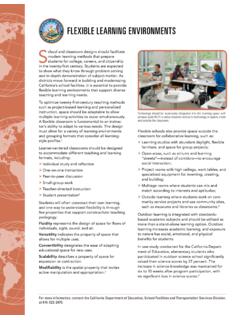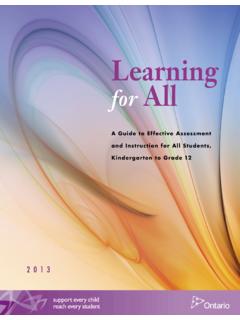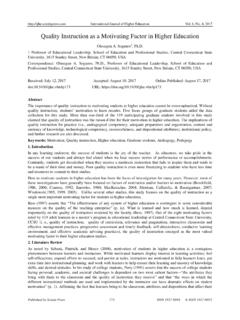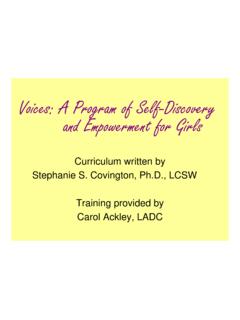Transcription of INTERCULTURAL COMPETENCE MODEL - UW College of …
1 INTERCULTURAL COMPETENCE MODEL From The Identification and Assessment of INTERCULTURAL COMPETENCE as a Student Outcome of Internationalization at Institutions of Higher education in the United States by Dr. Darla K. Deardorff in Journal of Studies in International education , Fall 2006, 10, p. 241-266 and in The SAGE Handbook of INTERCULTURAL COMPETENCE , 2009 (Thousand Oaks: Sage). Pyramid MODEL of INTERCULTURAL COMPETENCE (Deardorff, 2006. 2009): DESIRED EXTERNAL OUTCOME: Behaving and communicating effectively and appropriately (based on one s INTERCULTURAL knowledge, skills, and attitudes) to achieve one s goals to some degree DESIRED INTERNAL OUTCOME: Informed frame of reference/filter shift: Adaptability (to different communication styles & behaviors; adjustment to new cultural environments); Flexibility (selecting and using appropriate communication styles and behaviors; cognitive flexibility); Ethnorelative view; Empathy Knowledge & Comprehension: Cultural self-awareness; Deep understanding and knowledge of culture (including contexts, role and impact of culture & others world views); Culture-specific information.
2 Sociolinguistic awareness Skills: To listen, observe, and interpret To analyze, evaluate, and relate Requisite Attitudes: Respect (valuing other cultures, cultural diversity) Openness (to INTERCULTURAL learning and to people from other cultures, withholding judgment) Curiosity and discovery (tolerating ambiguity and uncertainty) NOTES: Move from personal level (attitude) to interpersonal/interactive level (outcomes) Degree of INTERCULTURAL COMPETENCE depends on acquired degree of underlying elements Copyright 2006 by Deardorff INTERCULTURAL COMPETENCE MODEL From The Identification and Assessment of INTERCULTURAL COMPETENCE as a Student Outcome of Internationalization at Institutions of Higher education in the United States by Dr.
3 Darla K. Deardorff Deardorff in Journal of Studies in International education , Fall 2006, 10, p. 241-266 and in The SAGE Handbook of INTERCULTURAL COMPETENCE , 2009 (Thousand Oaks: Sage) Process MODEL of INTERCULTURAL COMPETENCE (Deardorff, 2006, 2009): Notes: Begin with attitudes; Move from individual level (attitudes) to interaction level (outcomes) Degree of INTERCULTURAL COMPETENCE depends on acquired degree of attitudes, knowledge/comprehension, and skills Copyright 2006 by Deardorff Attitudes: Respect (valuing other cultures); Openness (withholding judgment); Curiosity & discovery (tolerating ambiguity) Desired External Outcome: Effective and appropriate communication & behavior in an INTERCULTURAL situation Desired Internal Outcome: Informed Frame of Reference Shift (adaptability, flexibility, ethnorelative view, empathy) Knowledge & Comprehension: Cultural self-awareness, deep cultural knowledge, sociolinguistic awareness SKILLS: To listen, observe & evaluate; To analyze, interpret & relate








